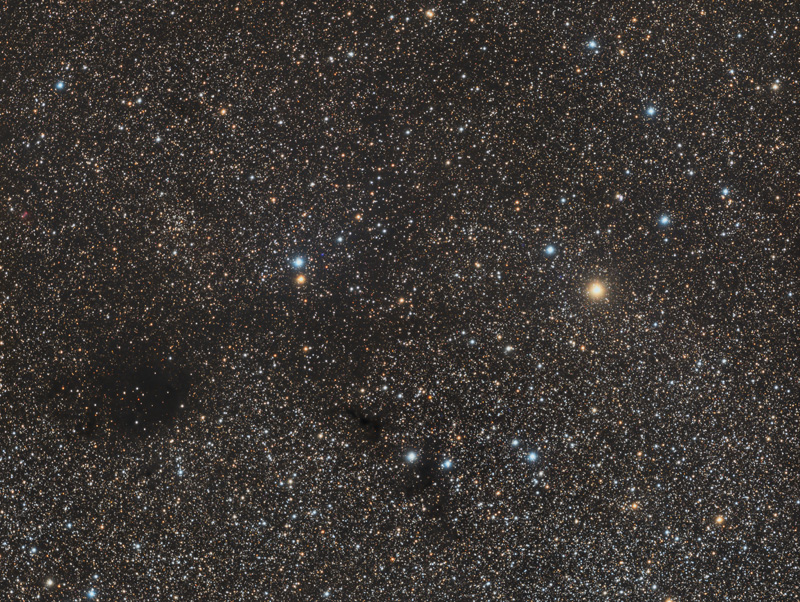
Cygnus around IC1369
At first, when I shot this image, I did it on a whim thinking I had 3 or 4 hours of darkness left and the summer Milky Way would be rising so I picked an area within the constellation Cygnus the Swan which had some interesting dark nebula (clouds of dust so thick no star light even gets through). After processing the image I was surprised at the objects here. The devil is in the details and the details come through in the full resolution image available above. Other than just a bunch of stars, this image contains a star cluster, two planetary nebula and several dark nebula and even two galaxies.
First of all the brightest orange star in the image is 63 Cygni (SAO 50456) which shines at magnitude 4.53 and lies 1,000 light years distant. Over to the lower left is the round dark nebula Barnard 361 which is so thick little star light gets through in this area. Dark dust actually extends a bit up and too the right into the top half of the image. Over and to the right of Barnard 361 are several other dark nebula which also block the light of all stars behind these areas. In the extreme left edge of the image and just above the center is a reddish planetary nebula that looks like a butterfly. It is Sh 1-89 shining at magnitude 14.5. Its what is left of a star that ended its life and blew out the gas that made it up. Sh 1-89 is 6,000 light years distant. A second planetary nebula called NGC 7026 lies right next to an orange star just above 63 Cyngi ( see the annotated image) NGC 7026 looks like a rectangle and shows a bit of color in the high resolution version of the image. It shines at magnitude 10.89. Above the dark nebula B361 is the star cluster IC1369 at magnitude 8.8. It's almost lost in the myriad of stars in this area. IC1369 is 6,800 light years distant.
So what started out as an image showing an un impressive bunch of stars in the summer Milky Way turned out to be a really interesting area of the sky.
- Optics : Stellarvue SV102T Triplet Refractor with a 2" prototype flattener/reducer
- Mount: Mountain Instruments MI-250
- Camera: QSI 583
- Filters: Astrodon 31mm LRGB filter set
- Exposure: L:120 R:60 G:60 B:60
- Camera/Mount Control: Maxim DL 5.23, CCD Commander
- Processing: PixInsight 1.8 RC7
- Location: Stark Bayou Observatory, Ocean Springs, MS
- Date: June 13



